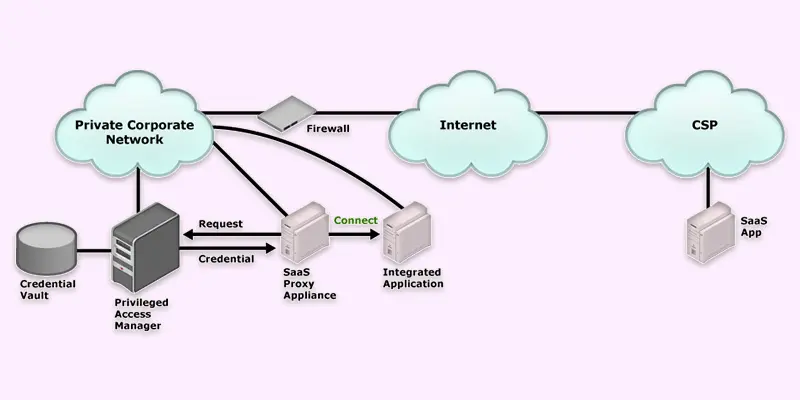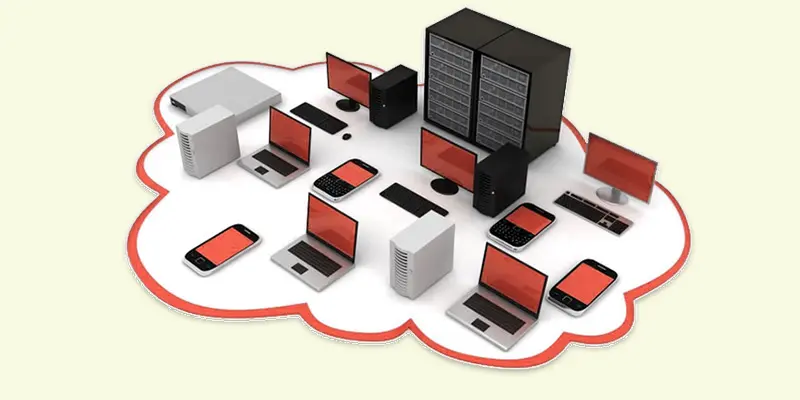What Are the Components of Cloud Computing Architecture?
Published: 3 May 2025
Components of Cloud Computing Architecture
The components of cloud computing architecture work together to create a seamless experience for users and businesses. But what exactly are these components, and how do they fit together? Many people struggle with understanding how cloud systems are organized, which can make choosing the right solution difficult. Making smarter judgements and utilising the cloud efficiently requires an understanding of the elements that make up cloud computing technology.

Major Components of Cloud Computing System
Similar to how puzzle pieces fit together, the many components of a cloud computing system cooperate to operate cloud services. The elements that make up the architecture of cloud computing are as follows:
- Front-End
- Back-End
- Cloud Delivery Models (IaaS, PaaS, SaaS)
- Network
- Storage
- Servers
- Databases
- Security
- Load Balancer
- Virtualization
- Middleware
- Runtime
- Data Centers
- Resource Management
Front-End
The front-end is the part of cloud computing that users see and use. It includes things like web browsers, apps, or any device used to access the cloud. It’s the face of the cloud system that connects users to the back-end.
Back-End
The back-end is the part of cloud computing that does all the work behind the scenes. It includes servers, storage, databases, and software. This is where the data is stored and processed.
Cloud Delivery Models (IaaS, PaaS, SaaS)
Cloud delivery models are different ways to offer cloud services to users. Each model has its own role and purpose.
- IaaS (Infrastructure as a Service) gives you basic resources like servers and storage, so you can build and manage your own systems.
- PaaS (Platform as a Service) provides a ready-to-use platform for developing and running apps without worrying about handling the hardware.
- SaaS (Software as a Service) offers ready-made applications over the internet, like email services or online file storage, that you can use right away.
Network
The network in cloud computing connects all the components, allowing them to communicate with each other. It helps transfer data between the front-end (what users see) and the back-end (where data is stored and processed). The network ensures everything works smoothly and efficiently.
Storage
Storage in cloud computing is where all your data, files, and information are saved. It allows you to store large amounts of data online and access it anytime, from anywhere. Cloud storage is secure, easy to manage, and doesn’t require physical space on your device.
Servers
In cloud computing, servers are strong computers used for data management and storage. They manage user requests and execute applications. Think of servers as the workers that process everything in the cloud and make sure it runs smoothly.
Databases
Databases in cloud computing store and organize data so it can be easily accessed, managed, and updated. They help store things like user information, files, or transactions. Cloud databases are flexible and can grow as you need more space.
Security
Cloud computing security guards against theft, damage, and illegal access to data. It consists of safeguards like firewalls, encryption, and strong passwords. Cloud security ensures that your information is safe while being stored and shared online.
Load Balancer
Network traffic is divided across several servers with the aid of a load balancer. It ensures that no server is overloaded. This keeps the system fast, stable, and reliable for users.
Virtualization
Virtualization allows one physical server to run many virtual machines. It helps us use hardware better and lets businesses run different systems on the same server.
Middleware
Middleware acts like a bridge between applications and the operating system. It helps different software communicate and work together smoothly.
Runtime
Runtime is the environment where programs run and execute. It provides all the tools and resources needed for applications to work properly.
Data Centers
Data centers are large facilities that store servers, storage, and network systems. They provide the power, cooling, and security needed to keep cloud services running 24/7.
Resource Management
Resource management controls how cloud resources like storage, servers, and networks are used. It helps in sharing resources efficiently and avoiding waste.

Conclusion About Core Components of Cloud Technology
The components of cloud computing work together to create a seamless experience for users and businesses. In my experience, having a solid understanding of these components is crucial for anyone looking to make informed decisions about cloud solutions. I recommend taking time to explore each part of the architecture, as it will help you choose the right cloud setup for your needs. Don’t hesitate to dive into the world of cloud computing today and discover how it can transform your workflow.
FAQS
Cloud infrastructure is mostly made up of servers, storage, databases, networking, and security systems. Together, these enable cloud data management, storage, and security.
A cloud architect designs and manages the cloud infrastructure for businesses. They ensure that the cloud system is efficient, secure, and scalable to meet the company’s needs.
A cloud engineer builds and fixes cloud systems, while a cloud architect designs the overall structure and plans how everything should work together.
Cloud architecture is the design and structure of how cloud services, storage, servers, and networks work together to deliver online services.
You create a cloud architecture by planning the right mix of servers, storage, networks, and security, then designing how they connect and work together.
A cloud architecture strategy is a plan that guides how you design, build, and manage cloud systems to make sure they are safe, reliable, and cost-effective.

- Be Respectful
- Stay Relevant
- Stay Positive
- True Feedback
- Encourage Discussion
- Avoid Spamming
- No Fake News
- Don't Copy-Paste
- No Personal Attacks



- Be Respectful
- Stay Relevant
- Stay Positive
- True Feedback
- Encourage Discussion
- Avoid Spamming
- No Fake News
- Don't Copy-Paste
- No Personal Attacks





